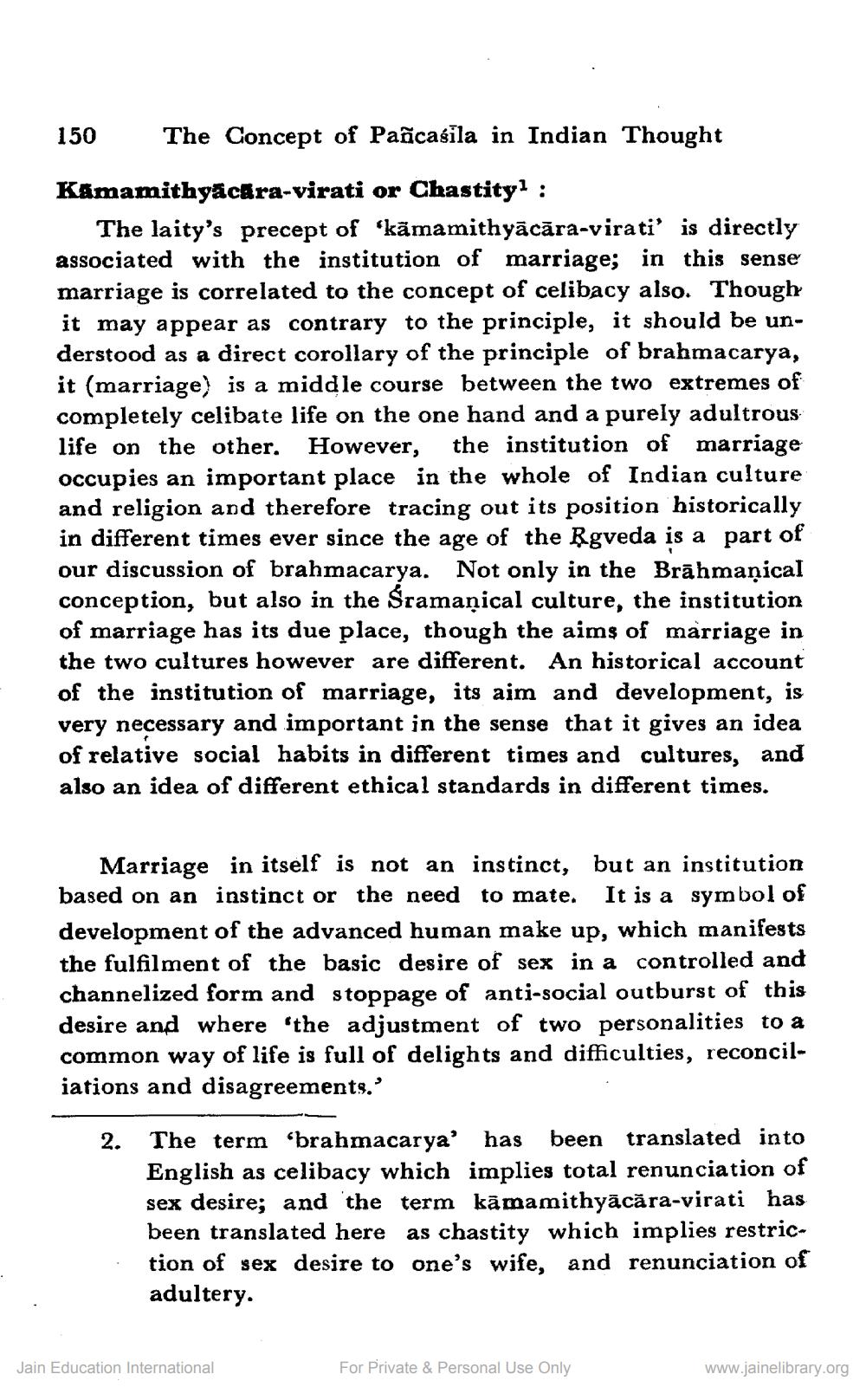________________
150
The Concept of Pancasila in Indian Thought
Kåmamithyacára-virati or Chastity :
The laity's precept of ‘kảmamithyācāra-virati' is directly associated with the institution of marriage; in this sense marriage is correlated to the concept of celibacy also. Though it may appear as contrary to the principle, it should be understood as a direct corollary of the principle of brahmacarya, it (marriage) is a middle course between the two extremes of completely celibate life on the one hand and a purely adultrous life on the other. However, the institution of marriage occupies an important place in the whole of Indian culture and religion and therefore tracing out its position historically in different times ever since the age of the Rgveda is a part of our discussion of brahmacarya. Not only in the Brāhmaṇical conception, but also in the Sramaņical culture, the institution of marriage has its due place, though the aims of marriage in the two cultures however are different. An historical account of the institution of marriage, its aim and development, is very necessary and important in the sense that it gives an idea of relative social habits in different times and cultures, and also an idea of different ethical standards in different times.
Marriage in itself is not an instinct, but an institution based on an instinct or the need to mate. It is a symbol of development of the advanced human make up, which manifests the fulfilment of the basic desire of sex in a controlled and channelized form and stoppage of anti-social outburst of this desire and where the adjustment of two personalities to a common way of life is full of delights and difficulties, reconciliations and disagreements."
2.
The term 'brahmacarya' has been translated into English as celibacy which implies total renunciation of sex desire; and the term kāmamithyācăra-virati has been translated here as chastity which implies restriction of sex desire to one's wife, and renunciation of adultery.
Jain Education International
For Private & Personal Use Only
www.jainelibrary.org




